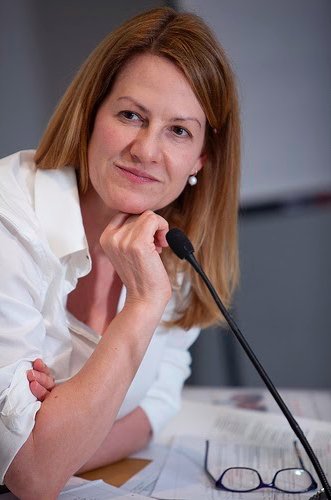Women in Conflict

Everyone is at risk during armed conflict, but throughout history and worldwide women and girls bear the brunt of sexual violence - yet they are often excluded from conflict-prevention dialogue. Women who care for children, the sick, disabled and the elderly shoulder responsibilities beyond their own needs and safety, as they often take responsibility for ensuring that others have adequate food, water, shelter care and protection. Conflict can reinforce existing gender inequalities, and low gender parity in peacetime can exacerbate the vulnerabilities of women and girls in war. Struggling to access basic resources renders them particularly vulnerable to coercion from those, usually male combatants and duty-bearers, with control over essentials in short supply.
Human rights organisations have reported that in Afghanistan, since the Taliban returned to power in 2021, the imposition of female rights-violating policies have severely restricted female freedom of movement, expression, and association, and deprived many of earned income, access to health services and education. Female activists, duty-bearers and leaders who successfully challenged gender norms and achieved notable profiles in peacetime, became a particular focus for intimidation and retribution with the onset of conflict.
Men and boys are more likely than women and girls to be killed in war. While female mortality is generally lower, the culture and tactics of a particular conflict determines the extent and nature of sexual and gender-based violence. Women and girls are frequently targeted for sexual violence, or for providing longer-term sexual services to their captors and may be forced into marriage. Abduction of girls in armed struggle is not infrequently reported in the media, Some of the distressing complications for those forced into child-bearing by their captors have been made painfully clear from the experiences of some of the 276 girls abducted in 2014 from their school in Chibok, Nigeria, by Boko Haram and forced into sexual slavery.
The UN Office on Drugs and Crime highlights that human trafficking is associated with high numbers of people fleeing armed conflict. Even in relative places of respite and assistance, such as refugee camps, women and girls are frequently abducted by gangs and trafficked for sexual slavery. The scale is such that international agencies are calling out perpetrators. In 2022, the Report of the United Nations Secretary General on Conflict-Related Sexual Violence (S/2022/272) named armed groups including the Lord ́s Resistance Army in the Central African Republic and South Sudan, state actors in Myanmar, Al-Shabab and the Somali National Army in Somalia, among others as “Parties credibly suspected of committing or being responsible for patterns of rape or other forms of sexual violence in situations of armed conflict”.
Against a background of high risk of sexual abuse, access to sexual and reproductive services and resources such as menstrual management products and contraception are often hampered during and after conflict. Pregnancy, whether resulting from intimacy within a consensual relationship, or as a result of coercive sex or sexual violence, renders women increasingly vulnerable during war, when antenatal and delivery services are weakened or destroyed. Although the 2021 Lancet Series on Women’s and Children’s Health in Conflict Settings highlighted a dearth of systematic data, the UN estimates that maternal mortality during peacetime rises 2.5 times in conflict.
As we have learned from the Second World War, conflict can trigger positive social change and more equitable gender dynamics as women assume new roles and skills in the combat arena and fill key production roles previously held by men. So what steps are being taken to protect women and girls from the consequences of armed conflict and to capitalise on their skills?
In the last decade, Regional Refugee Response Plans have been developed to coordinate responses to the needs of refugee populations in countries neighbouring conflict zones. The first, in 2012, addressed the needs of Syrian refugees in Lebanon, Jordan, Turkey, Iraq and Egypt. The most recent, in 2022, drawn-up in response to the cross-border displacement caused by the war in Ukraine, incorporated a Regional Gender Task Force to support neighbouring countries to mainstream and integrate gender equality and the empowerment of women and girls in their national refugee responses. The Taskforce conducted rapid gender analyses to identify specific gender-related concerns and identified national, regional and cross-border solutions to be embedded in policy and humanitarian assistance.
The approaches and priorities of countries during the post-conflict phase mediates the situation of women and girls throughout the demobilisation, reconstruction and recovery phases. One important step is acknowledgment and engagement of women’s skills in conflict prevention and peacebuilding. In 2020, the UN Security Council adopted a resolution (S/RES/1325) affirming the important role of women in the avoidance and resolution of conflicts, peace negotiations, peacebuilding, peacekeeping, humanitarian responses and in post-conflict reconstruction. It stresses the importance of equal female participation in all efforts for peace and security and calls for an increase in the participation of women and incorporation of gender perspectives in all United Nations peace and security efforts.
Two of the most important elements in peacebuilding are accountability and justice. The collection and forensic examination of evidence of human rights abuses and war crimes are essential for bringing perpetrators to justice. This in turn is crucial to ensuring that in future conflict, potential human rights abusers are in no doubt that they will be held accountable for their actions and that sexual violence as an act of war can no longer be perpetrated with impunity.
Further reading: Making the Invisible Visible: An evidence-based analysis of gender in the regional response to the war in Ukraine. (October 2022). United Nations Entity for Gender Equality and the Empowerment of Women (UN Women). https://eca.unwomen.org/sites/default/files/2022-10/RGTF_MakingTheInvisibleVisible_ENG_0.pdf
Check for updates on the Women's Network Facebook Page